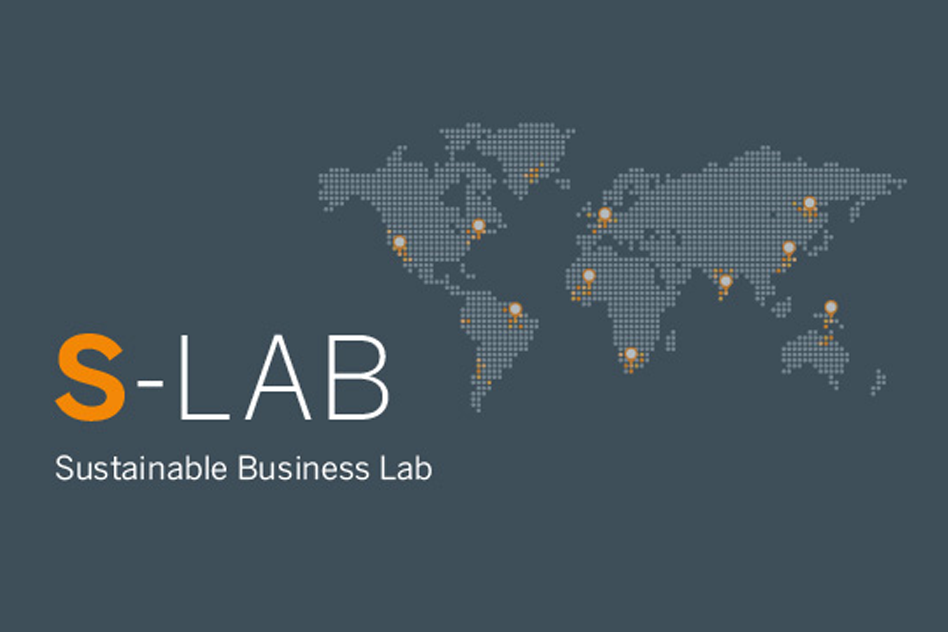
A new methodology developed as a class project shows that measures such as installing energy-efficient lighting and repairing steam traps on the campus heating system could reduce MIT’s energy use and carbon emissions—and save the Institute money at the same time.
The project was part of a new Sloan School of Management class called Laboratory for Sustainable Business, or S-Lab, in which more than 60 students explored the concept of sustainability and the business opportunities and challenges it presents. A key exercise was teaming up to work on real-world projects with clients ranging from multinational corporations and energy startups to nonprofits and health care organizations.
For graduate students Nicholas Hofmeister and Brandon Monk of the Sloan School and Cyd McKenna of the Department of Urban Studies and Planning, the client was MIT itself—more specifically, the Campus Energy Task Force of the MIT Energy Initiative, also known as the “Walk the Talk (WTT) Task Force. Representing the task force were its co-chair Leon R. Glicksman, professor of architecture and mechanical engineering, and task force member Steven M. Lanou, a deputy director in MIT’s Environmental Programs Office.
The mission of the task force includes identifying and promoting measures that could be taken within the next few years to reduce energy use and carbon dioxide (CO2) emissions on the MIT campus.
Lanou noted the difficulty of that mission. “Possible projects range from equipment upgrades and energy-efficiency measures to renewable power systems and behavioral change programs, he said. “How do we begin to identify, assess, and prioritize those opportunities based on both financial metrics and greenhouse gas-mitigation metrics?
Hofmeister and his partners took on the challenge. Assisted by Eric Beaton, senior engineer in the Systems Engineering Group, and others in MIT’s Department of Facilities, the students made a list of about a hundred possible projects and—for as many as possible—metrics such as the impact on CO2 emissions, capital cost, payback period, net present value, and return on investment. Including both environmental and financial impacts allowed the team to assess the net present value per metric tonne of CO2-equivalent reduced, which summarizes “how much bang you get for your buck, said Lanou.
To track and store the information, the team turned to Google spreadsheets. “Google spreadsheets allowed us to create a collaborative living document, said Hofmeister. “Rather than having one file that people had to pass around, we had a document that everybody could access and work on simultaneously.
The result of the work—the “Carbon Mitigation Matrix—includes a range of projects with differing characteristics. For some, the capital investment required is relatively low and would be paid back by operating savings within a few years or less. Examples include replacing conventional light bulbs with compact fluorescents; repairing steam traps; putting “energy misers on vending machines; and recommissioning buildings, which involves examining all systems to make sure they are still operating according to the design specifications when they were installed.
The team also assessed behavioral changes such as using revolving doors, shutting off computers and closing laboratory fume hoods whenever they aren’t in use, and making energy-efficient purchasing decisions. Those items involve minimal capital cost and would have a significant impact, but they require educational campaigns to help people change their habits.
Other projects involve major capital investment and longer payback periods. Examples include installation of renewable systems such as solar panels and expansion of MIT’s energy-efficient cogeneration plant—an option already being scrutinized as part of a utility master-planning effort.
The team identified many opportunities to cut energy use and greenhouse gas emissions while simultaneously saving money. In a number of cases, the estimated rate of return on the projects exceeds that of MIT’s endowment.
“The methodology [developed by the students] will be a valuable tool for any institution putting together a portfolio of projects with different capital costs, payback times, and impacts on energy use and emissions, said Lanou. “In some cases, it demonstrates the economic as well as environmental benefits of doing seemingly mundane projects.
The matrix is not a “final polished product, said Peter Cooper, manager of sustainability engineering and utility planning in the Department of Facilities. Indeed, MIT and other universities are engaged in ongoing discussions about exactly how to calculate the reduction in CO2 emissions associated with buying one fewer kilowatt-hour of electricity. That reduction varies with the mix of fuels used to generate the power supplied over the grid.
Nevertheless, Cooper called the matrix a “good tool to get us on our way. Many items on the matrix were known to Facilities, but it also elicited lots of new ideas, especially those relating to behavior change. “The matrix served a good purpose in the first year of the Energy Initiative to collect ideas without judging them and to show that there are two different kinds of ideas that could get implemented requiring different skills and different people to get them done, Cooper said.
Accordingly, the WTT Task Force formed two subgroups, one largely populated by Facilities people who can do engineered changes and the other by campus leaders on recycling and others who have experience in promoting changes in behavior.
To John D. Sterman, the Jay W. Forrester Professor of Management and one of the S-Lab instructors, developing the matrix was an ideal class project. Students demonstrated for themselves and for others that investing in the environment doesn’t have to come at a fiscal cost; indeed, it can bring a significant fiscal gain. “Often there’s no tradeoff, Sterman said. “By making these investments we can help the environment and save money.
This article appears in the Winter 2008 issue of Energy Futures.